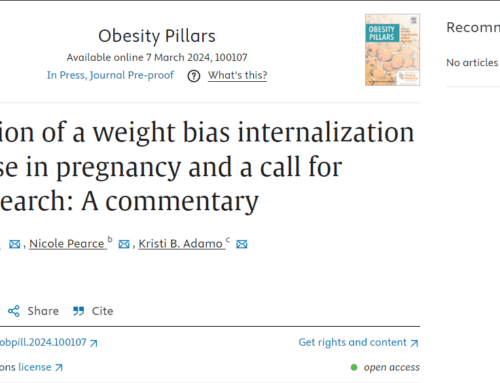Today’s post comes from Maryam Kebbe. Maryam is a PhD student in the Department of Pediatrics at the University of Alberta. She is also the current Chair of the University of Alberta’s CON-SNP and the Bilingual Communications Coordinator of the CON-SNP National Executive. You can find more about Maryam here!
Patient-centered care is a form of care provision in which we observe a shift from the paternalistic role of a provider to a partnership with patients. This practice relies on patient-provider relationships, which are founded on elements of rapport, trust, communication, and collaboration, to enable patients to play an active role in their health care. The Institute of Medicine defines patient-centered care as: “Providing care that is respectful of, and responsive to, individual patient preferences, needs and values, and ensuring that patient values guide all clinical decisions”.1 More specifically, eight principles comprise patient-centered care2, including:
- Access to care
- Continuity and transition
- Involvement of family and friends
- Emotional support
- Physical comfort
- Information and education
- Coordination and integration of care
- Respect of patients’ preferences
Family-centered care (FCC) is nested within patient-centered care and involves the family of the patient as co-managers in the care pathway. FCC recognizes the family as a constant unit of strength and support in a child or adolescent’s life compared with turnover within service systems and personnel3. It strives to maximize care by acknowledging families’ strengths, individualities, and preferences, all the while respecting a child or adolescent’s choices.
It follows that FCC is appropriate for use in pediatric healthcare, including pediatric weight management services. With FCC, however, one must not mute a child or adolescent’s voice. Although the evidence is limited, current most up-to-date systematic reviews of lifestyle interventions for pediatric obesity management have concluded that parent-only interventions may be as effective as parent-child interventions and cost less4. Cost-effectiveness, however, should not justify an unethical approach to care whereby children and adolescents are excluded, especially if this population has the developmental capacity for and interest in being involved in independent decision-making. Indeed, Ewald et al. (2013) have found that parent-only interventions have higher attrition rates4. We may attribute this to multiple reasons, including a lack of involvement of and engagement by the primary patient as well as different priorities held by different family members. Should conflicts arise in the latter case, Sisk et al. (2017) outline three models for providers to navigate decisional discord5. The arbitrative model is recommended for maintained family cohesiveness, where a balance is sought between patient and family decisional differences5. This model may not be appropriate under all circumstances; nonetheless, providers should aim to be inclusive of all family members and promote the active participation of all children and adolescents, if and when applicable6.
FCC has been linked with better health (e.g., enhanced adherence to medical recommendations) and economic (e.g., decreased health care utilization) outcomes, including increased satisfaction7. In the context of obesity, a positive health experience, coupled with individualized treatment for health behaviour change based on cultural and psychosocial factors8, can enhance caregivers’ confidence in their roles, which may later be extrapolated to increased competence and responsibility by children and adolescents towards their own health care6.
Although FCC holds numerous benefits over a paternalistic approach to care, this doesn’t translate to its uptake by providers and implementation into clinical practice. For effective and optimal use, a few considerations need to be put in place. At the core, an understanding of FCC9 needs to surface, such as its specific constituents, the balance between a partnership and joint decision-making, as well as responsibility and autonomy levels of families, which do not always correlate with one another10.
Delivering care as described herein is best approached with practice and self-reflection, especially considering established healthcare delivery techniques practiced by providers. Our current medical system should adopt this approach in its curriculum as this generation assumes leadership positions and moves into practice. Of note, patient-oriented research11 has been gaining momentum in recent years with a vision of improving health outcomes and health care experience via evidence-based medicine. While specific details regarding patient-oriented research are not within the scope of this post, it should be considered complementary to patient-centered care as the two are mutually inclusive.
References
- Institute of Medicine. Crossing the quality chasm: A new health system for the 21st century. Washington, DC: National Academy Press; 2001.
- Shelton TL, Stepanek JS. Family-centered care for children needing specialized health and developmental services. Association for the Care of Children’s Health, 7910 Woodmont Ave., Suite 300, Bethesda, MD 20814; 1994.
- Harrison TM. Family-centered pediatric nursing care: state of the science. Journal of pediatric nursing. 2010;25(5):335-43.
- Ewald H, Kirby J, Rees K, Robertson W. Parent-only interventions in the treatment of childhood obesity: a systematic review of randomized controlled trials. Journal of Public Health. 2013;36(3):476-89.
- Sisk BA, DuBois J, Kodish E, Wolfe J, Feudtner C. Navigating Decisional Discord: The Pediatrician’s Role When Child and Parents Disagree. Pediatrics. 2017;e20170234.
- Committee on hospital care and institute for patient- and family-centered care. Patient-and family-centered care and the pediatrician’s role. Pediatrics. 2012 Feb;129(2):394.
- Bertakis KD, Azari R. Patient-centered care is associated with decreased health care utilization. The Journal of the American Board of Family Medicine. 2011;24(3):229-39.
- Cheng H, Hayes D, Edbrooke‐Childs J, Martin K, Chapman L, Wolpert M. What approaches for promoting shared decision‐making are used in child mental health? A scoping review. Clinical psychology & psychotherapy. 2017.
- Kuo DZ, Houtrow AJ, Arango P, Kuhlthau KA, Simmons JM, Neff JM. Family-centered care: current applications and future directions in pediatric health care. Maternal and child health journal. 2012;16(2):297-305.
- Arango P. A parent’s perspective on family-centered care. Journal of Developmental and Behavioral Pediatrics. 1999;20(2):123–124.
- Canadian Institutes of Health Research (CIHR), Strategy for Patient-Oriented Research – Patient Engagement Framework, https://www.cihr-irsc.gc.ca/e/48413.html (retrieved October 1st, 2016)






